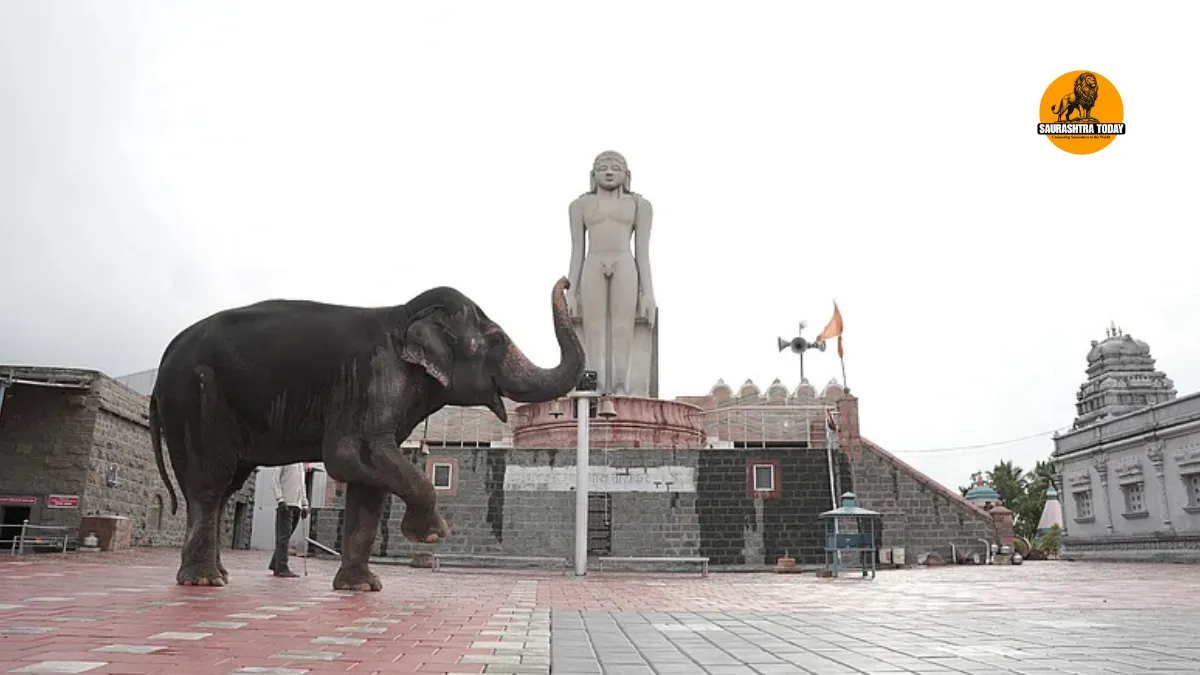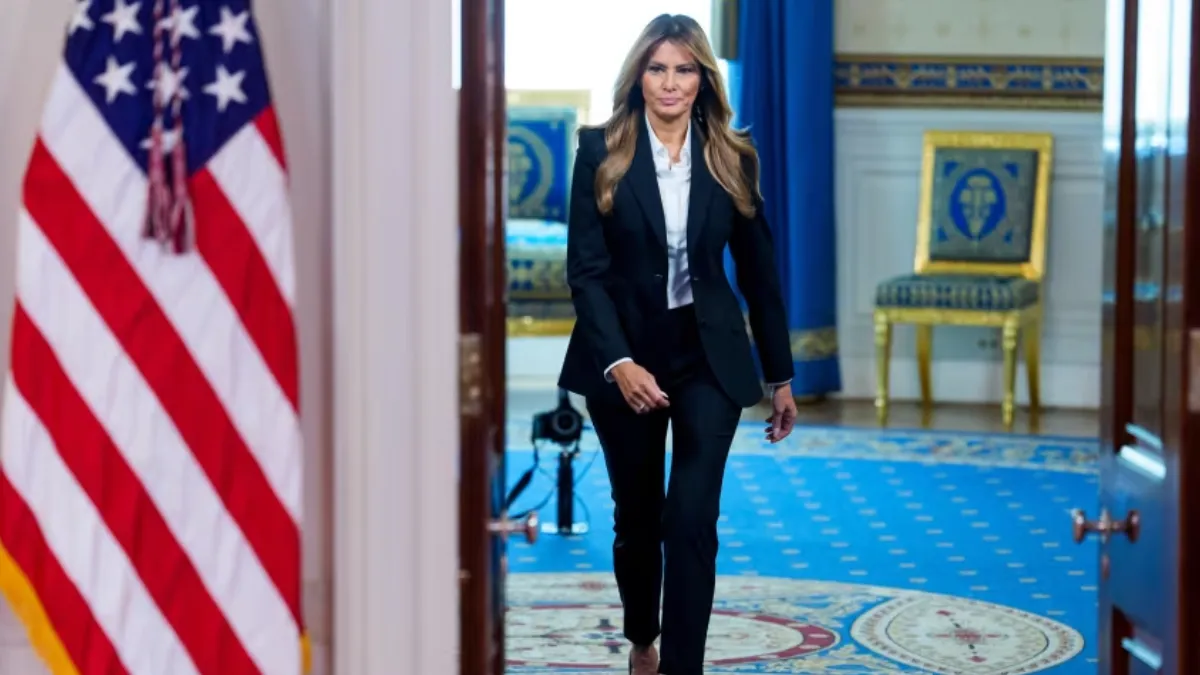A hopeful turn for the 36-year-old elephant as Kolhapur prepares to welcome her home
In a significant development in India’s ongoing wildlife welfare debate, the Supreme Court’s High-Powered Committee (HPC) on wildlife transfers has directed that all official permissions for setting up a rehabilitation centre for Madhuri Elephant in Kolhapur must be completed within 20 days. This order marks a new chapter in the long-running controversy over the fate of Madhuri—also known as Mahadevi—a 36-year-old elephant who has become a symbol of compassion, culture, and coexistence in western India.
The directive, issued on Wednesday evening, comes more than two months after Vantara, a Jamnagar-based animal rescue and conservation initiative, proposed creating a satellite rehabilitation centre in Nandani, Kolhapur district, to house Madhuri in familiar surroundings. The move follows months of public outcry and protests across Kolhapur, where locals have passionately demanded Madhuri’s return from Jamnagar, citing her deep emotional bond with the region and its people.
The Madhuri Elephant Kolhapur Story: From Devotion to Dispute
For over three decades, Madhuri lived peacefully at the Swastishri Jinsen Bhattarak Pattacharya Mahaswamy Sanstha, a revered Jain mutt in Nandani, Kolhapur. Locals remember her as more than just an elephant — she was part of their community’s spiritual and cultural identity. Pilgrims offered her fruits and garlands; children grew up calling her “Madhuri Tai.” Her calm nature and devotion during temple rituals made her a beloved presence in the region.
But in July this year, Madhuri was relocated from Kolhapur to Vantara’s rescue facility in Jamnagar, Gujarat, following a court directive. The decision was meant to provide her with better medical care, as she had been suffering from arthritis and age-related ailments. However, what followed was an unexpected storm of emotion and protest across Kolhapur.
Residents, monks, and animal lovers flooded social media and streets with demands to bring her back. They argued that removing Madhuri from her familiar environment was emotionally traumatic for the elephant and disrespectful to her long-standing connection with the Jain shrine and its devotees.
From Outcry to Action: How the Madhuri Movement Began
Soon after Madhuri’s transfer, videos and photos of her in Jamnagar began circulating online. Some claimed she appeared lonely; others alleged she was not being treated with the same love she received in Nandani. Hashtags like #BringBackMadhuri and #MadhuriElephantKolhapur began trending locally.
The widespread concern caught the attention of Maharashtra’s Chief Minister Devendra Fadnavis, who convened a meeting in August with Vivaan Karani, CEO of Vantara. In a rare show of cooperation between state and private conservation bodies, Vantara assured the state government that it was open to working together to ensure Madhuri’s wellbeing. The organization even agreed to join the government’s petition in the Supreme Court seeking Madhuri’s safe return to Kolhapur.
During that meeting, Vantara also proposed a compromise solution — establishing a satellite rehabilitation centre right in Nandani. This centre would combine expert veterinary care with a familiar environment, allowing Madhuri to remain close to the people who had cared for her for most of her life.
Supreme Court’s Committee Steps In: Hope for a Humane Resolution
On Wednesday, the Supreme Court’s High-Powered Committee (HPC) reviewed progress on the proposal. During the hearing, the committee was informed about the ongoing discussions among Vantara, the Jain mutt, and the Maharashtra government.
The HPC, after examining the details, issued a clear directive:
- All statutory clearances for the Madhuri Elephant Kolhapur rehabilitation centre — including land use, environmental, and wildlife permissions — must be completed within 20 days.
- A joint medical inspection must be carried out by veterinarians representing the Jain shrine, PETA India, and Vantara to assess Madhuri’s current health and wellbeing.
- The next hearing has been scheduled for November 29, by which time all permissions and medical evaluations are expected to be completed.
This decision is being hailed as a balanced step toward both animal welfare and community sentiment, ensuring Madhuri’s care remains the top priority while acknowledging the cultural importance she holds for Kolhapur.
Understanding the Emotional Bond Between Kolhapur and Madhuri
In Kolhapur, elephants have long been part of temple culture, representing wisdom and strength in Indian spirituality. For decades, Madhuri stood beside monks during religious ceremonies, blessing devotees with her trunk and participating in festivals. Her departure left a visible emotional vacuum.
Local resident and Jain follower Shashikant Jain recalls,
“Madhuri was never just an animal for us. She was family. When she left, it felt like losing a loved one. Seeing her return to Kolhapur, even to a new centre, will bring peace to many hearts.”
Such sentiments explain why the Madhuri Elephant Kolhapur movement resonated deeply across Maharashtra. It wasn’t merely about relocation — it became a broader conversation about empathy, animal rights, and the importance of preserving cultural bonds between humans and wildlife.
The Role of Vantara: From Controversy to Collaboration
The Vantara Animal Rescue and Rehabilitation Centre in Jamnagar is one of India’s largest wildlife conservation initiatives. It has rescued hundreds of animals from circuses, illegal captivity, and poor living conditions. When Madhuri was transferred there, the move was initially praised by conservationists who saw it as a step toward ensuring professional veterinary care for her arthritis and joint issues.
However, Vantara soon found itself at the centre of public criticism. The outpouring of emotion from Kolhapur was so overwhelming that the organization had to clarify its intentions. In a statement, Vantara emphasized that its only concern was Madhuri’s health and happiness, not ownership or control.
By proposing a satellite facility in Kolhapur, Vantara showcased flexibility — a gesture that turned what could have been a bitter conflict into a collaborative conservation effort. The plan aims to create a model where religious institutions, local communities, and modern rescue facilities can work together for animal welfare.
Why the Supreme Court’s Order Matters
The Supreme Court panel’s latest order is crucial for several reasons:
- Speedy Implementation:
The 20-day deadline ensures there will be no unnecessary bureaucratic delays in building Madhuri’s new home. - Collaborative Oversight:
The inclusion of PETA, Vantara, and the Jain mutt in Madhuri’s medical assessment ensures transparency and joint accountability. - Community Reassurance:
By approving a rehabilitation centre in Kolhapur, the court acknowledges the emotional connection between people and animals — something rarely recognized in legal wildlife decisions. - Setting a Precedent:
This case could serve as a national model for handling future wildlife transfers involving deep cultural ties.
Building the Nandani Satellite Rehabilitation Centre
The proposed Madhuri Elephant Kolhapur Rehabilitation Centre will be built in Nandani, a serene region surrounded by greenery and temples. According to initial plans, it will feature:
- Spacious open enclosures replicating Madhuri’s natural environment
- A veterinary clinic specializing in geriatric elephant care
- A hydrotherapy pool to relieve arthritis pain
- Shade structures and mud baths for her comfort
- Viewing zones for limited public interaction
- Collaboration with animal behavior experts and local caretakers
If implemented successfully, it will become one of India’s most humane elephant care facilities, blending traditional compassion with scientific care standards.
Also read: Lion Safari Park Rajkot: Gujarat’s Next Major Wildlife Destination Set to Open by April 2026
Reactions from Conservationists and Devotees
The Supreme Court’s decision has been widely welcomed.
Dr. Rina Patel, a wildlife veterinarian, said:
“This case highlights how emotional and ethical considerations can coexist with scientific wildlife management. Madhuri’s case is setting a beautiful example.”
Meanwhile, local devotees in Kolhapur have already begun preparations to welcome Madhuri home, once the court finalizes the relocation. “We’ll decorate the path with flowers the day she returns,” said one temple volunteer with visible excitement.
Balancing Law, Faith, and Animal Welfare
The Madhuri case stands at a unique crossroads of law, faith, and compassion. It reflects how India’s judiciary and conservation community are learning to navigate the complex terrain between legal wildlife protection and local cultural emotions.
Experts believe that Madhuri’s journey could become a case study in modern animal ethics. It shows how conservation doesn’t always mean separation from people — sometimes, coexistence in culturally rooted settings can be more humane.
Also read: International Snow Leopard Day 2025 : Protecting the Ghost of the Mountains
What’s Next for Madhuri?
All eyes are now on the upcoming November 29 hearing. By then, authorities must complete all paperwork and inspections to make Madhuri’s new home a reality. If all goes well, the construction of the rehabilitation centre in Kolhapur could begin by early December, paving the way for Madhuri’s safe return before the end of the year.
For thousands in Kolhapur, this would be more than a homecoming — it would be the restoration of a bond that has lasted for decades.
A Symbol of Compassion and Coexistence
Beyond the legal complexities, Madhuri’s story represents something timeless — the power of empathy between humans and animals. She is not just the Madhuri Elephant of Kolhapur; she has become a living reminder that every creature deserves familiarity, dignity, and love.
Her journey — from temple rituals to protests, from Jamnagar to Supreme Court hearings — reveals how public awareness and compassion can influence policy and inspire humane solutions. If successful, Madhuri’s rehabilitation centre could inspire similar efforts across India, ensuring that no elephant is ever separated from its emotional roots without care and consideration.
Conclusion: A New Dawn for Madhuri and Kolhapur
The Supreme Court’s order has finally given shape to a resolution that honors both science and sentiment. Madhuri’s new life in Kolhapur, surrounded by the people who love her, will mark the beginning of a new era in ethical wildlife management in India.
As the people of Kolhapur await her return with prayers and garlands, Madhuri’s story continues to echo far beyond Maharashtra — reminding the world that compassion is the truest form of conservation.

















